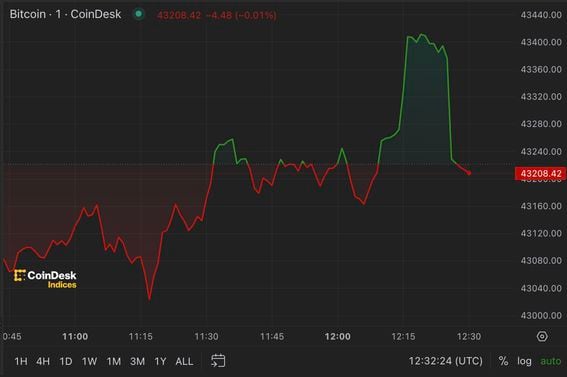Bitcoin’s price, which had been on a bullish trajectory for much of 2023, experienced a sudden drop. This unexpected decline in Bitcoin’s value has left investors and market analysts pondering the factors that could have led to this downturn. Despite a buoyant U.S. economy and positive job reports, Bitcoin seems to be diverging from traditional market trends, raising questions about the underlying dynamics at play in the cryptocurrency market.
The Influence of ETF Rumors and Market Sentiment
One significant factor contributing to Bitcoin’s price drop is the speculation surrounding the approval of a spot Bitcoin ETF in the United States. Rumors of a potential denial by the U.S. Securities and Exchange Commission (SEC) coincided with a sharp 8% flash crash in Bitcoin’s price. This correlation between unconfirmed news and market response underscores the sensitivity of cryptocurrency prices to regulatory developments.
Despite a general lack of confidence among financial advisers regarding the approval of a spot Bitcoin ETF in 2024, the crypto community was abuzz with speculation that a decision from the SEC might come as early as January 5. When the expected approval did not materialize, Bitcoin’s price responded negatively, sparking new rounds of rumors and contributing to market volatility.
Market Mechanics and Profit-Taking
Another driving force behind Bitcoin’s price movement appears to be the dynamics of the Bitcoin futures market. The timing and magnitude of long liquidations in the futures market have been closely aligned with the rumors regarding the ETF decision. A spike in Bitcoin long liquidations of $2.1 million within a short span further intensified the price decline. This liquidation trend, coupled with a significant drop in Bitcoin trading volumes, suggests a lack of consistent liquidity and buying pressure in the market.
Additionally, a record number of Bitcoin wallets being in profit has led to increased de-risking and profit-taking activities among traders. This behavior, combined with the recent drop in trading volume, indicates a cautious approach by investors, potentially leading to further declines in Bitcoin’s price.
Looking Ahead: Bitcoin’s Resilience Amidst Uncertainty
Despite the immediate challenges faced by Bitcoin, there remains a strong sentiment among market participants that the cryptocurrency will recover in the long term. The growing interest and involvement of financial institutions in Bitcoin add to this optimism. However, it is evident that Bitcoin’s price continues to be influenced by macroeconomic events, regulatory actions, and the Federal Reserve’s monetary policy.
Bitcoin’s journey is reflective of the larger narrative within the cryptocurrency market – one that is heavily influenced by external factors, yet resilient in its core nature. As the market evolves, Bitcoin’s role as a digital asset continues to be shaped by a confluence of regulatory decisions, investor sentiment, and global economic trends.
In essence, the recent drop in Bitcoin’s price is a reminder of the inherent volatility and complexity of the cryptocurrency market. While short-term fluctuations may cause concern, the long-term outlook for Bitcoin remains promising, buoyed by increasing institutional interest and the potential for broader market integration. As investors navigate this landscape, the interplay between market sentiment, regulatory developments, and macroeconomic factors will continue to be pivotal in shaping Bitcoin’s trajectory.





